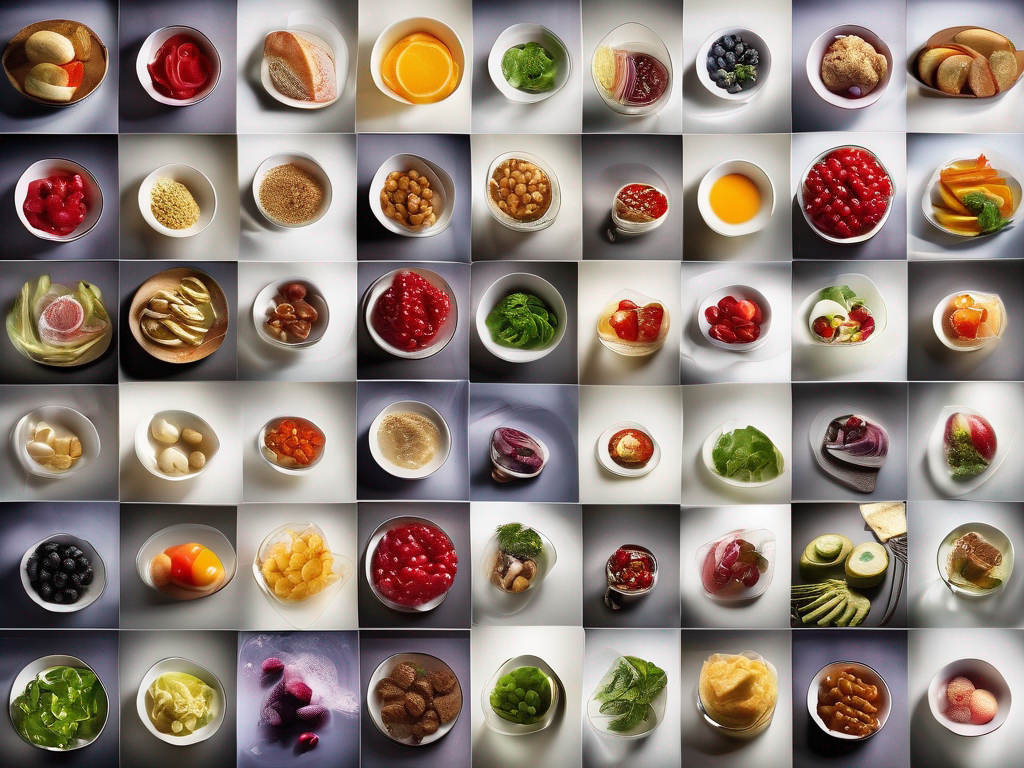
Maximizing Shelf Life: A Guide to Foods with Longevity
Get Your Free Food Safety Cheat Sheet
30 most common foods with instant answers. Print it and stick it on your fridge—completely free!
Maximizing Shelf Life: A Guide to Foods with Longevity
In today's fast-paced world, maximizing the shelf life of food items is essential to reduce waste and save money. By understanding which foods have a longer shelf life and how to store them properly, you can ensure that your pantry is well-stocked with fresh and safe ingredients. In this comprehensive guide, we will explore the best practices for extending the shelf life of various food items.
Understanding Shelf Life
Before diving into specific food items, it's important to understand what shelf life actually means. Shelf life refers to the length of time that a food product can be stored under specific conditions while maintaining its quality and safety for consumption. Factors such as packaging, storage temperature, and moisture levels can all affect the shelf life of a product.
Factors That Affect Shelf Life
Several key factors influence the shelf life of food items:
- Packaging: Proper packaging can help protect food from moisture, air, and light, extending its shelf life.
- Temperature: Storing food at the correct temperature can slow down the growth of bacteria and extend shelf life.
- Humidity: Excessive moisture can promote mold growth, while dry conditions can cause food to spoil more quickly.
- Light: Light exposure can cause food to degrade faster, especially in items like oils and spices.
- Microbial Activity: Bacteria, yeast, and mold can all contribute to the spoilage of food items.
Foods with Extended Shelf Life
Certain food items are known for their longevity and can be stored for extended periods if handled properly. Here are some examples of foods with longer shelf lives:
1. Whole Grains
Whole grains, such as brown rice, quinoa, and oats, have a longer shelf life compared to refined grains. To maximize their longevity, store them in airtight containers in a cool, dry place.
2. Dried Beans and Legumes
Dried beans and legumes are pantry staples with a long shelf life. Keep them in airtight containers and store them in a dark, cool location to prevent moisture and insect infestations.
3. Canned Foods
Canned foods, such as beans, tomatoes, and tuna, have a shelf life ranging from one to five years. Check the expiration dates on cans and store them in a cool, dry place.
4. Honey
Honey is known for its indefinite shelf life due to its low moisture content and high acidity, which inhibit microbial growth. Store honey in a sealed container at room temperature.
5. Dried Herbs and Spices
Dried herbs and spices can last for up to three years when stored in airtight containers away from heat and light. Check for freshness by smelling the aroma before use.
Tips for Extending Shelf Life
To maximize the shelf life of food items, follow these practical tips:
- Proper Storage: Store food items in airtight containers or packaging to prevent exposure to air and moisture.
- Labeling: Clearly label containers with the date of purchase or expiration to track the freshness of items.
- Rotation: Use the FIFO (First In, First Out) method to ensure that older items are used before newer ones.
- Temperature Control: Keep perishable items refrigerated at the appropriate temperature to slow down spoilage.
- Inspect Regularly: Check food items for signs of spoilage, such as mold, off smells, or unusual textures.
Conclusion
By understanding the factors that affect shelf life, identifying foods with longer longevity, and implementing proper storage practices, you can extend the shelf life of your pantry staples and reduce food waste. Whether you're stocking up on whole grains, canned goods, or dried herbs, following these guidelines will help you maintain a well-organized and sustainable pantry. Remember, proper food storage not only ensures food safety but also contributes to a more efficient and cost-effective kitchen.
Authoritative Food Safety References
These agencies and university labs inform every tip and health precaution we publish.
USDA FoodKeeper – Cold Storage Guidelines
Official refrigerator, freezer, and pantry timelines maintained by the U.S. Department of Agriculture.
Visit USDA FoodKeeperFDA Produce Safety Rule & Grower Guidance
Field-to-fridge handling practices that prevent contamination of fruits, vegetables, and leafy greens.
Visit FDA Produce SafetyCDC Foodborne Illness Prevention Hub
Surveillance-backed guidance on pathogens, symptoms, and steps to reduce foodborne illness risk.
Visit CDC Food SafetyUC Davis Postharvest Technology Center
University research detailing optimal storage atmospheres for produce after harvest.
Visit UC Davis PostharvestPenn State Extension – Home Food Preservation & Safety
Peer-reviewed extension bulletins on safe canning, chilling, and reheating practices.
Visit Penn State ExtensionGet Your Free Food Safety Cheat Sheet
30 most common foods with instant answers. Print it and stick it on your fridge—completely free! Want more? Upgrade to the complete guide with 70+ foods.
Scan your food directly and get instant safety info using our AI-powered camera feature.